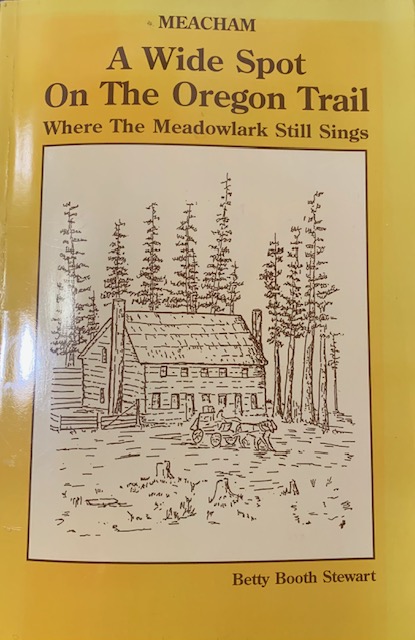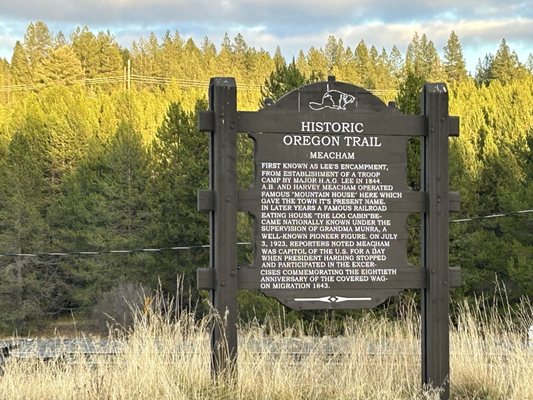Meacham History
For such a small town, Meacham has a fascinating history. Gunfights, railroads, wagon trains, elk herds, and more.
Before European contact, the members of the Cayuse, Umatilla, and Walla Walla people were 8,000 members strong. The native people lived in the Columbia River region for more than 10,000 years, moving in a large circle from the lowlands along the Columbia River to the highlands in the Blue Mountains to fish, hunt and gather food. In 1855, the Cayuse, Umatilla, and Walla Walla tribes and the U.S. Government negotiated a treaty in which 6.4 million acres were ceded in exchange for a reservation homeland. Source: CTUIR
Thousands of emigrants traveled west on the Oregon Trail in the mid-nineteenth century, following a route that Interstate 84 follows closely across the Blue Mountains today. The relatively flat meadows and year-round streams at the top of the Blue Mountains provide a much needed respite for emigrants before they continued the dangerous descent from Deadman Pass into the broad valley occupied by the Umatilla River and the now, the city of Pendleton. Most of the cities and larger towns in the Blue Mountains - including Meacham - lie along this route. Source: Oregon Encyclopedia
Major Henry A. G. Lee established a troop encampment, called Lee's Encampment, in the Meacham area in 1844. And in 1884, the Oregon Railway & Navigation (OR&N) Company completed a railroad line over the Blue Mountains to Baker City. Meacham was a station along the route that provide resupply for the railroad and food and lodging for passengers. Source: Streamliner Memories; Source: Wikipedia
Meacham was named for Harvey J. and Alfred B. Meacham, who operated Meacham Station, a stage station, in the 1860s and 1870s. The first post office in the locality, established in 1862, was named "Encampment". The name was changed to "Meacham" in 1890. Source: Wikipedia
“High in the Blue Mountains of Northeastern Oregon lies a valley with rolling hills on the east and west and with steeper slopes on the north and south. A stream runs among the trees and through a meadow, a rushing river when the winter snows melt, a mere trickle late in the summer. Fed by springs and tiny creeks along the way, almost dry in late summer, it is seldom without pools of water.
The valley, or pass as it is sometimes called, has long been a pathway and wayside for the animals, the Indians, the fur traders, the missionaries, the covered wagon pioneers, and the miners...Thousands marched in historic procession over the mountain, but few stayed.
A wayside since before recorded history...it is still a small community, always there, never quite becoming a ghost town of the past. Why not? It has always been needed to supply those who passed by, or to maintain the roads over which they traveled.”
Stewart, Betty Booth (1996)
Meacham: A Wide Spot on the Oregon Trail Where the Meadowlark Still Sings
Tigard, Oregon: Crossroad. ISBN 0-9653021-0-5.
Available here


